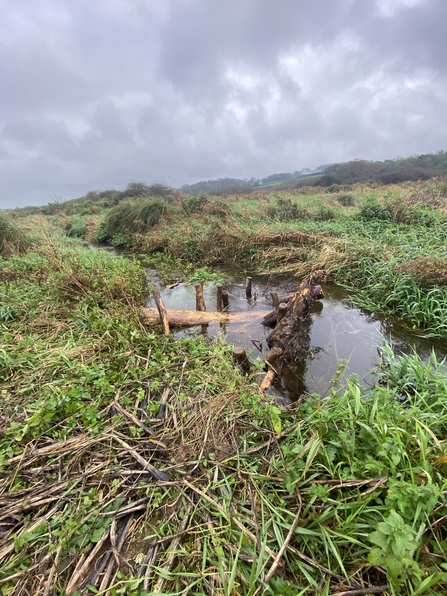Llangloffan Fen is a lowland wetland in the upper part of the Cleddau River SAC. The fen is managed in parts by the Wildlife Trust of South and West Wales (WTSWW), Natural Resources Wales (NRW) and a few private landowners.
Work carried out in early October at the WTSWW owned site was the first phase of a multi phased restoration plan for the river and fen as part of the Four Rivers for LIFE Project’s work to help re-naturalise these important habitats.
Historically, the river through Llangloffan Fen has been extensively straightened and dredged. This has had an impact on the water levels of the fen especially in the summer where the areas near the river are greatly affected. The straightening of the river has also simplified the in-river habitat, the channel shape is straight with tall steep banks and a featureless bed.
This recent phase of the work meant adding wood into the river channel to create structures that pinch the flow and force the river to re-naturalise.
The idea is to mimic the natural processes that happen when trees fall into rivers. The water forces its way around the wood causing localised erosion and creating new meander bends.
This process kickstarts the creation of new habitats, as eroded material deposits in the flow shadow of the wood, creating new gravel, sand and silt bars.
Gravel build-up creates important spawning areas for fish species such as trout and lamprey, and silt deposits can also provide important habitat for juvenile lamprey. These are rare and important fish that are known to have bred in the river, but their numbers have declined over recent years due to the degraded habitat.
Large woody material also adds complexity to the channel, creating a wide range of microhabitats which support the aquatic food chain.
This work by the LIFE project builds on the work done by the WTSWW some seven years ago (see images). The river has eroded its way around the wood structures and adding more wood to these areas will enhance the natural process which is already happening.
Falling trees and wood in rivers is a vital habitat for all manner of wildlife, as well as providing the physical structures that rivers need in order to create new habitats.
Additional work to further naturalise the river is proposed for summer 2024 and 2025.
To find out more about the Four Rivers for LIFE Project visit the website here .

